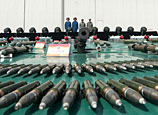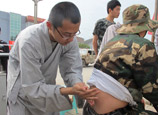
But more efforts are needed. UNESCO believes there are at least 17 million Chinese cultural relics abroad, far exceeding the number in the country's own museums.
A great number were looted, stolen and smuggled out of China between the 1860s and 1949, a period in which the country was subjected to invasions and civil wars.
Some Chinese collectors have worked to purchase such missing items under their own initiative and donate them to China's government. This is how the first five of the Yuanmingyuan's animal heads made their way back to their original home. Three were purchased by the China Poly Group Corporation at a cost of 30 million HK dollars. And Macau business magnate Stanley Ho privately bought the horse and pig head.
Other ways of claiming back relics include legal and diplomatic proceedings, as well as donations from abroad.
Legal and diplomatic retrieval is based on a series of international conventions that China has signed, including the 1970 UNESCO convention on the Means of Prohibiting and Preventing the Illicit Import, Export and Transfer of Ownership of Cultural Property, and the 1995 Unidroit Convention on Stolen or Illegally Exported Cultural Objects.
But experts say the fact that these conventions can not be applied retroactively forms a major obstacle for legal proceedings.
Xie Chensheng, honorary president of the China Society of Cultural Relics, said retrieving lost cultural relics is a long-term cause that requires patience.
"But we don't need to worry. People's consciences will eventually mean they hand them over," Xie added.

















 Heavy rain affects traffic in S China
Heavy rain affects traffic in S China


![]()
